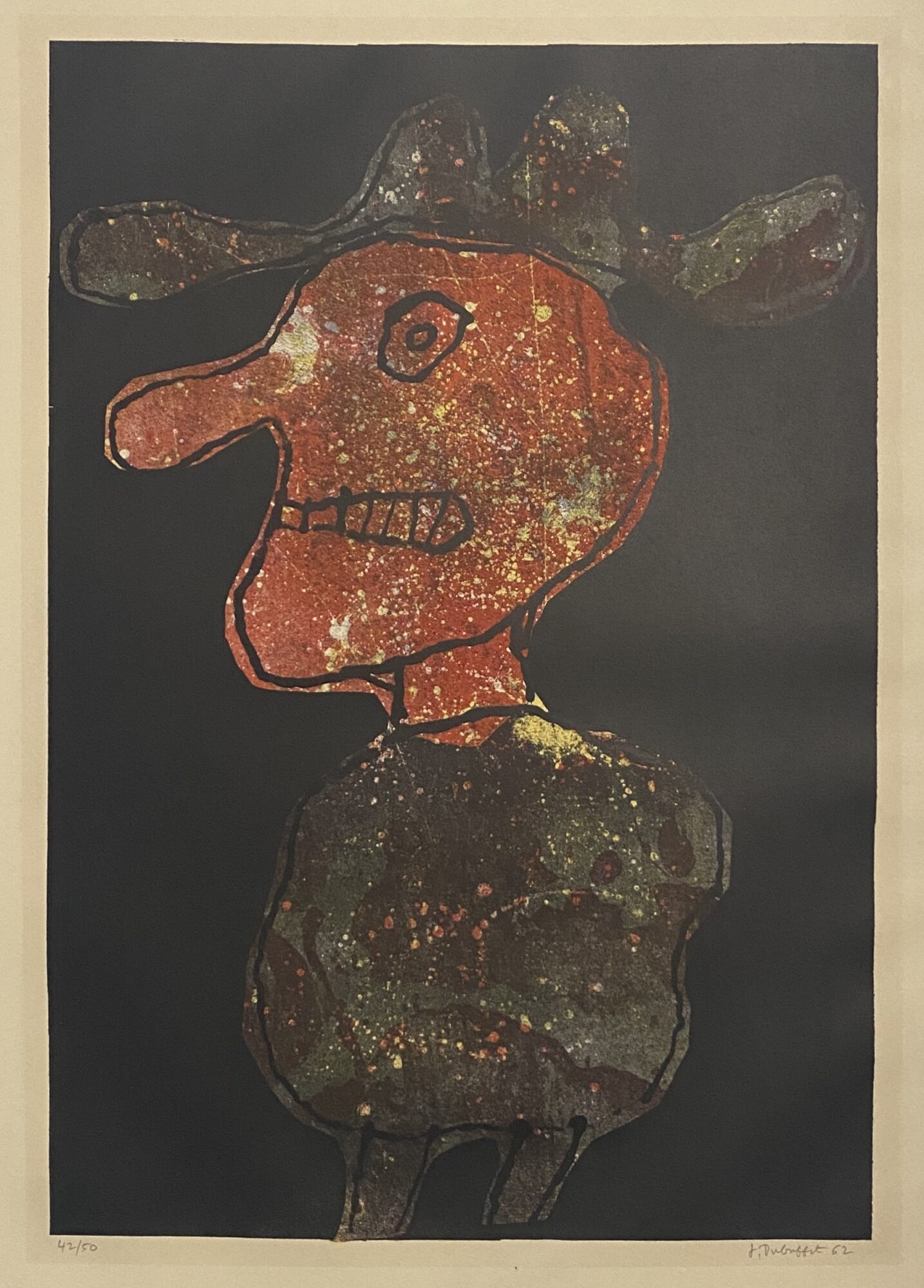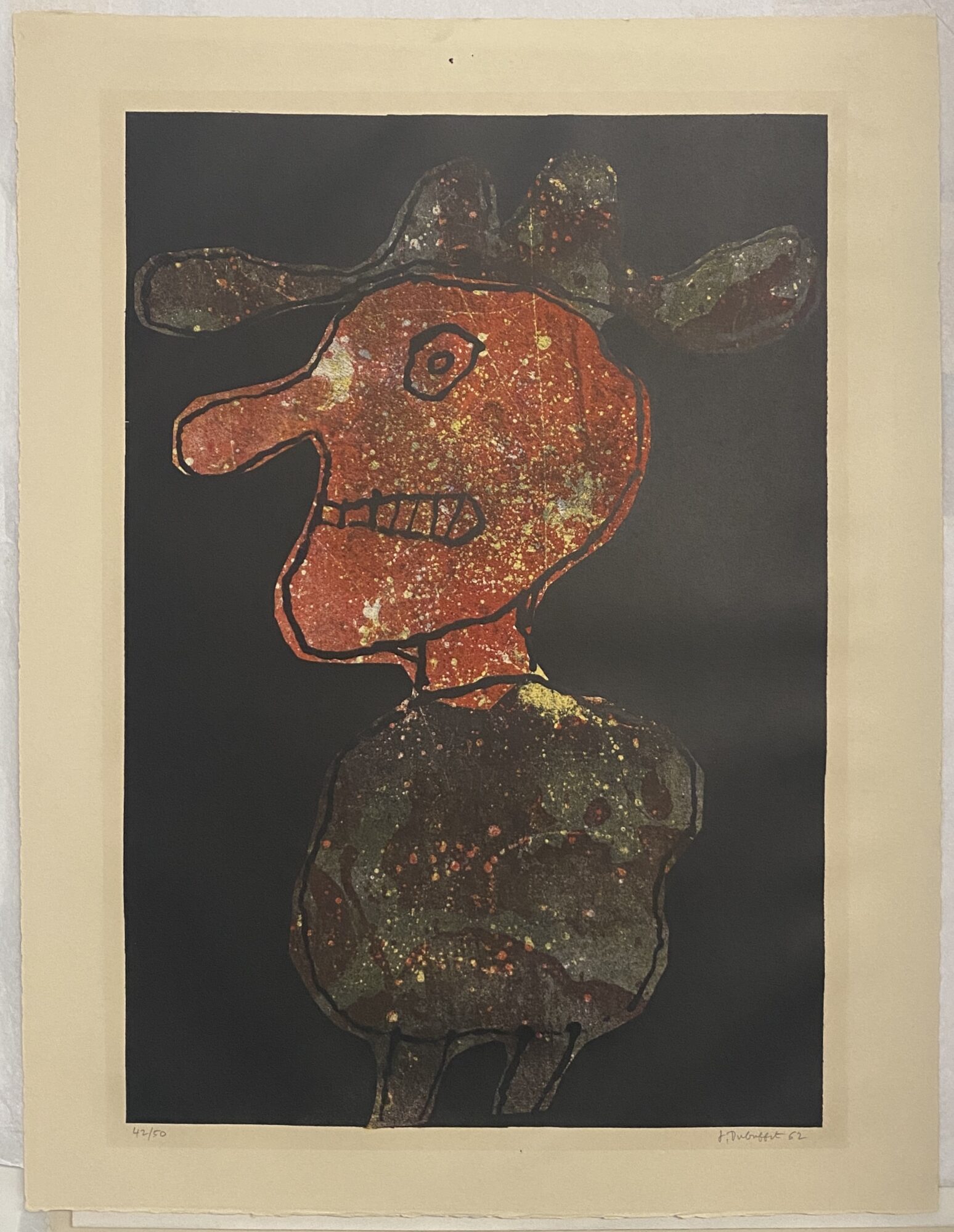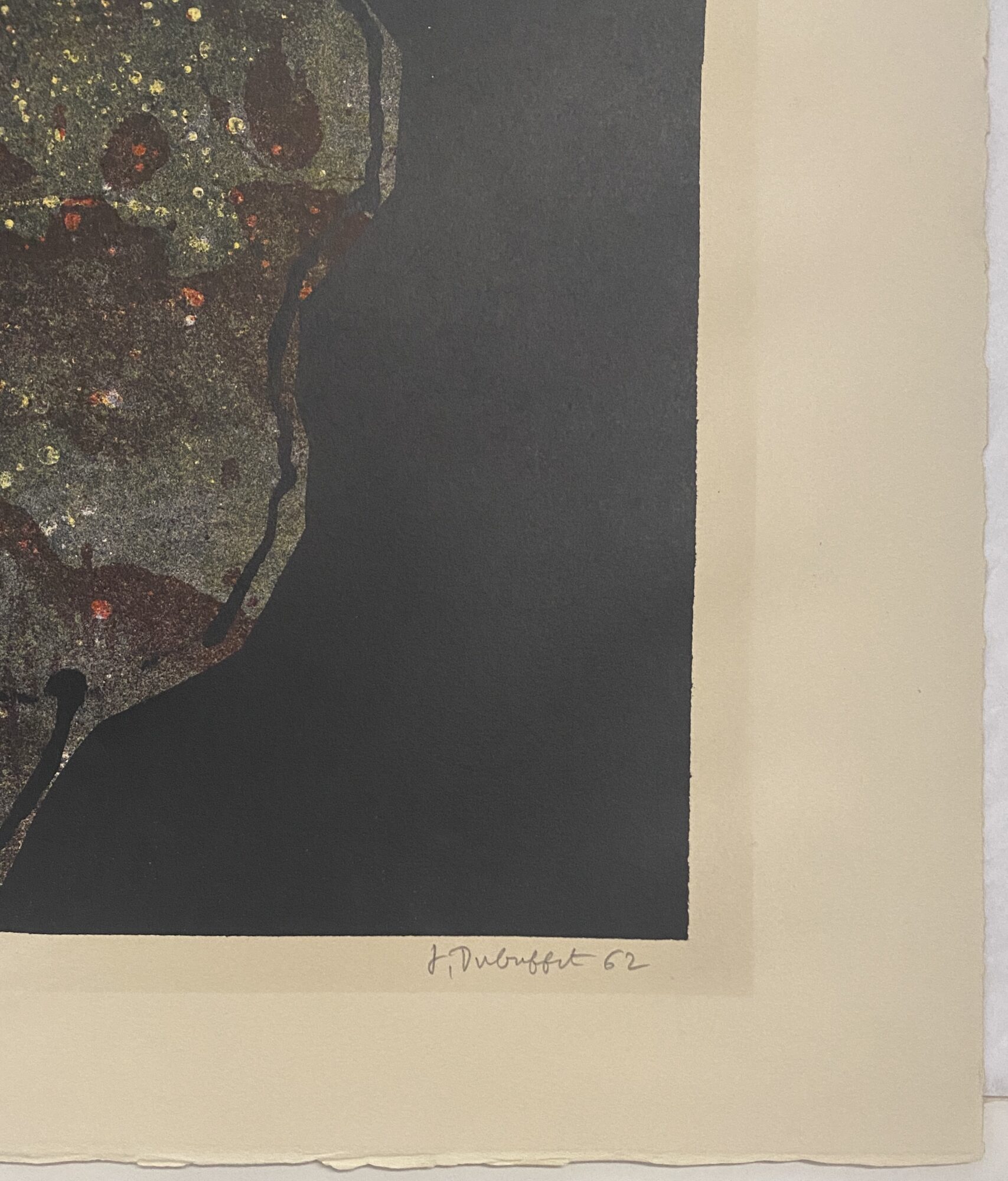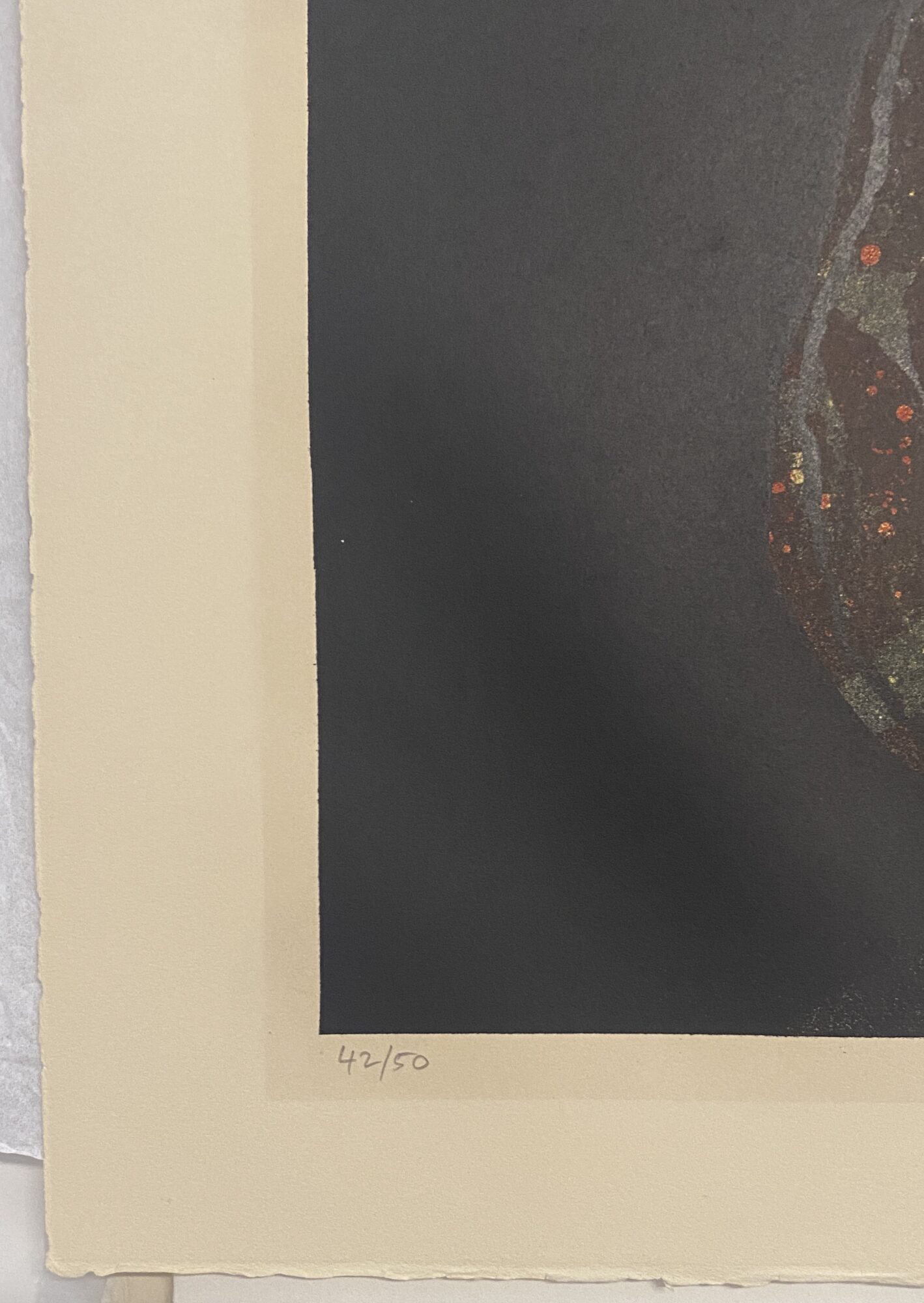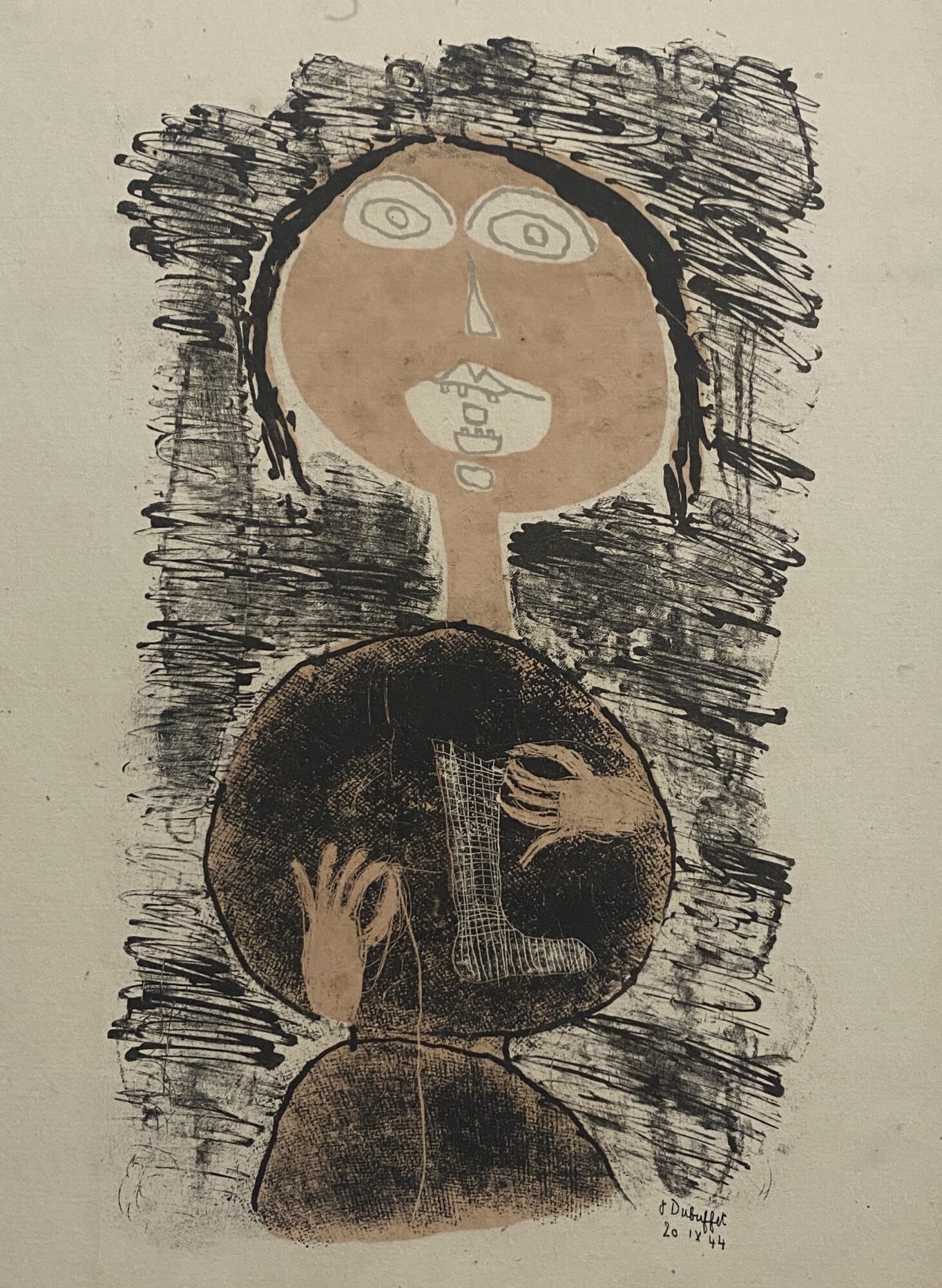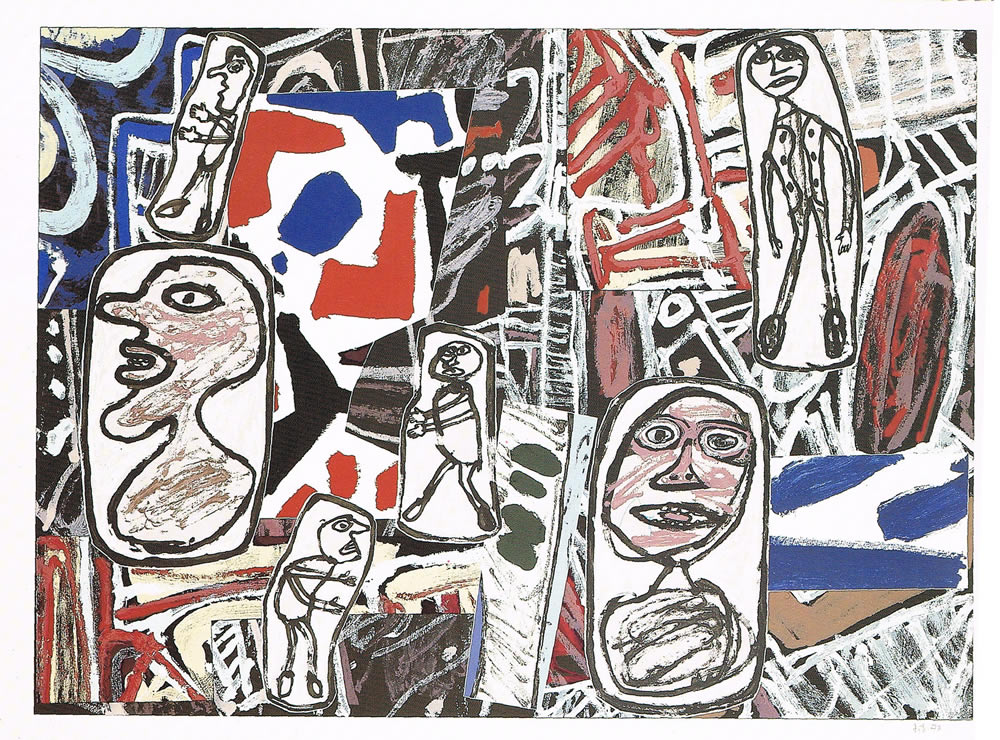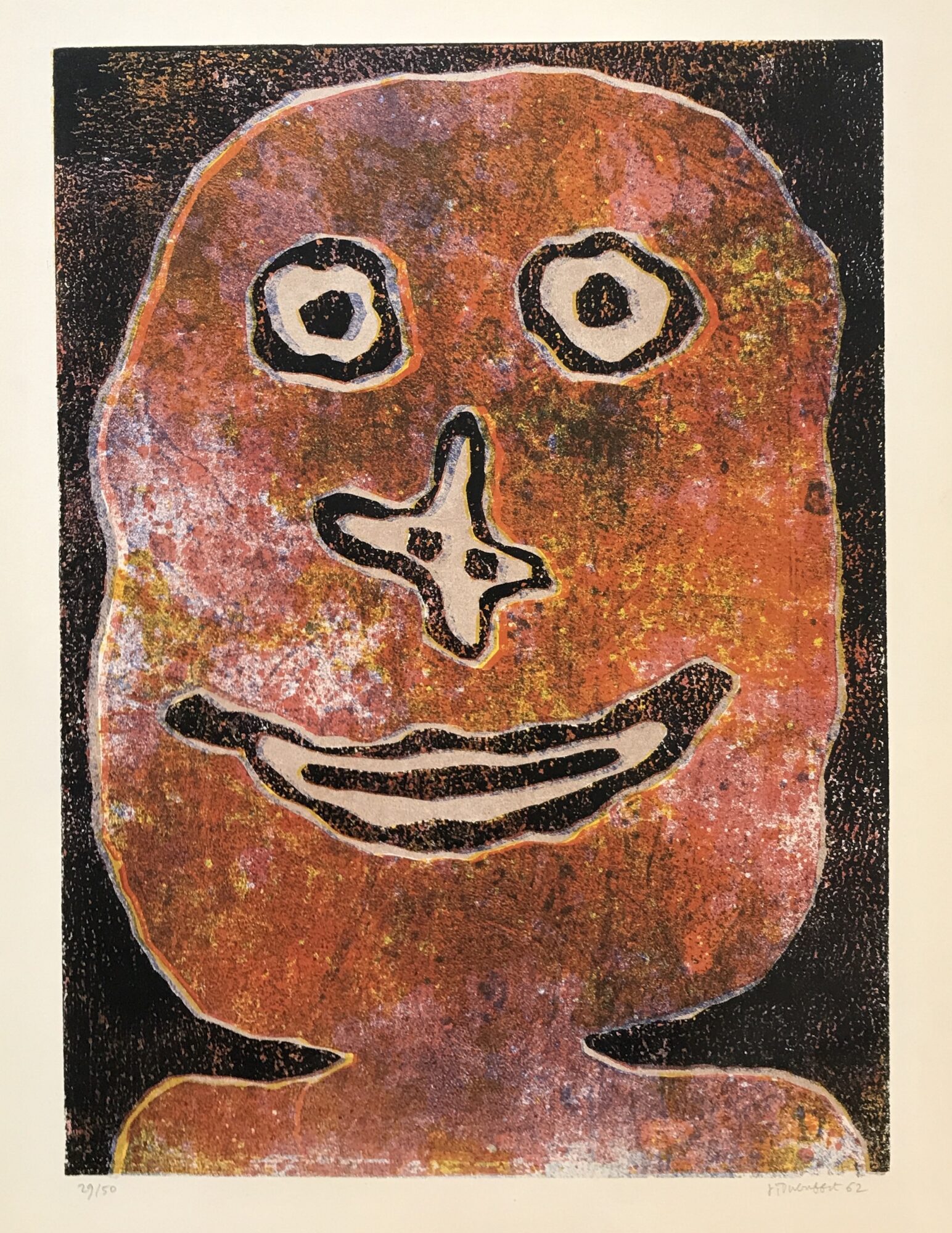Jean Dubuffet – Personnage au Chapeau
Jean Dubuffet, Personnage au Chapeau is an original Lithograph in six colors made in 1962. It is signed, dated, and numbered from the edition of 50. Webel 810.
From 1945, Jean Dubuffet began collecting works of art that Dubuffet referred to as Art Brut. Art Brut (meaning “raw art,” oftentimes referred to as ‘outsider art’) was highly spontaneous art created by untutored individuals working outside aesthetic norms, such as art by psychiatric patients, prisoners, and children. Jean Dubuffet amassed a collection of such art that is now housed at the Musee de l’ Art Brut in Switzerland. Jean Dubuffet sought to create an art with as much freedom as Art Brut, and the art of Dubuffet often appears primitive and child-like.
Jean Dubuffet’s work is marked by a rebellious attitude toward prevailing notions of high culture, beauty, and good taste. He began making art in earnest at age 41, after a stint in the army and a successful career as a wine merchant. The next four decades were tremendously prolific: he wrote poetry and theoretical texts, played jazz, experimented widely with art-making materials and techniques, and worked in many mediums, including painting, drawing, printmaking, large-scale outdoor sculpture, and what he called “animated painting”—works bridging painting, sculpture, dance, and theater, and featuring live performers.
| Title | Personnage au Chapeau |
|---|---|
| Medium | Lithograph |
| Year | 1962 |
| Edition | 50 |
| Catalogue Raisonné | Webel 810 |
| Signature | Signed |
| Size | 25.5 x 19.5 (in) 65 x 50 (cm) |
| Price | Price on Request |
Description
Jean Dubuffet, Personnage au Chapeau is an original Lithograph in six colors made in 1962. It is signed, dated, and numbered from the edition of 50. Webel 810.
From 1945, Jean Dubuffet began collecting works of art that Dubuffet referred to as Art Brut. Art Brut (meaning “raw art,” oftentimes referred to as ‘outsider art’) was highly spontaneous art created by untutored individuals working outside aesthetic norms, such as art by psychiatric patients, prisoners, and children.
Jean Dubuffet amassed a collection of such art that is now housed at the Musee de l’ Art Brut in Switzerland. Jean Dubuffet sought to create an art with as much freedom as Art Brut, and the art of Dubuffet often appears primitive and child-like.
Jean Dubuffet’s work is marked by a rebellious attitude toward prevailing notions of high culture, beauty, and good taste. He began making art in earnest at age 41, after a stint in the army and a successful career as a wine merchant.
The next four decades were tremendously prolific: he wrote poetry and theoretical texts, played jazz, experimented widely with art-making materials and techniques, and worked in many mediums, including painting, drawing, printmaking, large-scale outdoor sculpture, and what he called “animated painting”—works bridging painting, sculpture, dance, and theater, and featuring live performers.
Though he was an academically trained painter from a bourgeois family, Dubuffet maintained what he called in a 1951 lecture an “anticultural position.” He advocated for “instinct, passion, mood, violence, madness” rather than analysis and reason, as well as closer proximity to nature and natural forms and the discarding of traditional notions of beauty.
“Look at what lies at your feet!” he once said. “A crack in the ground, sparkling gravel, a tuft of grass, some crushed debris offer equally worthy subjects for your applause and admiration.” Such values were embodied in what Dubuffet termed art brut (or “raw art”), produced on the margins by children, outsider and folk artists, and the mentally ill.
His own collection of this work, formed in part with the help of the Surrealist Andre Breton and writer Jean Paulhan, was donated to the city of Lausanne, Switzerland, in 1971.
Additional information
| Title | Personnage au Chapeau |
|---|---|
| Medium | Lithograph |
| Year | 1962 |
| Edition | 50 |
| Catalogue Raisonné | Webel 810 |
| Signature | Signed |
| Size | 25.5 x 19.5 (in) 65 x 50 (cm) |
| Price | Price on Request |


